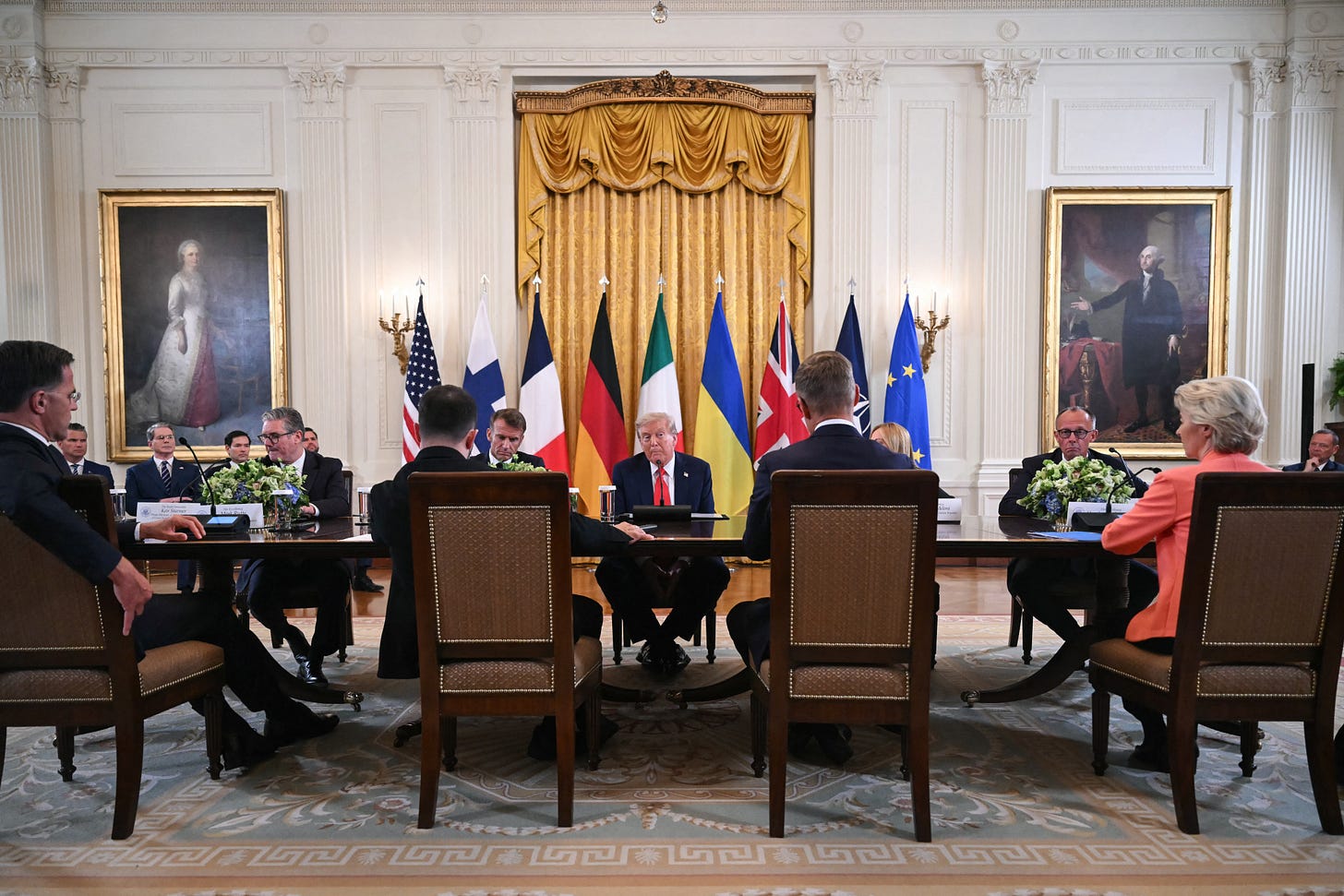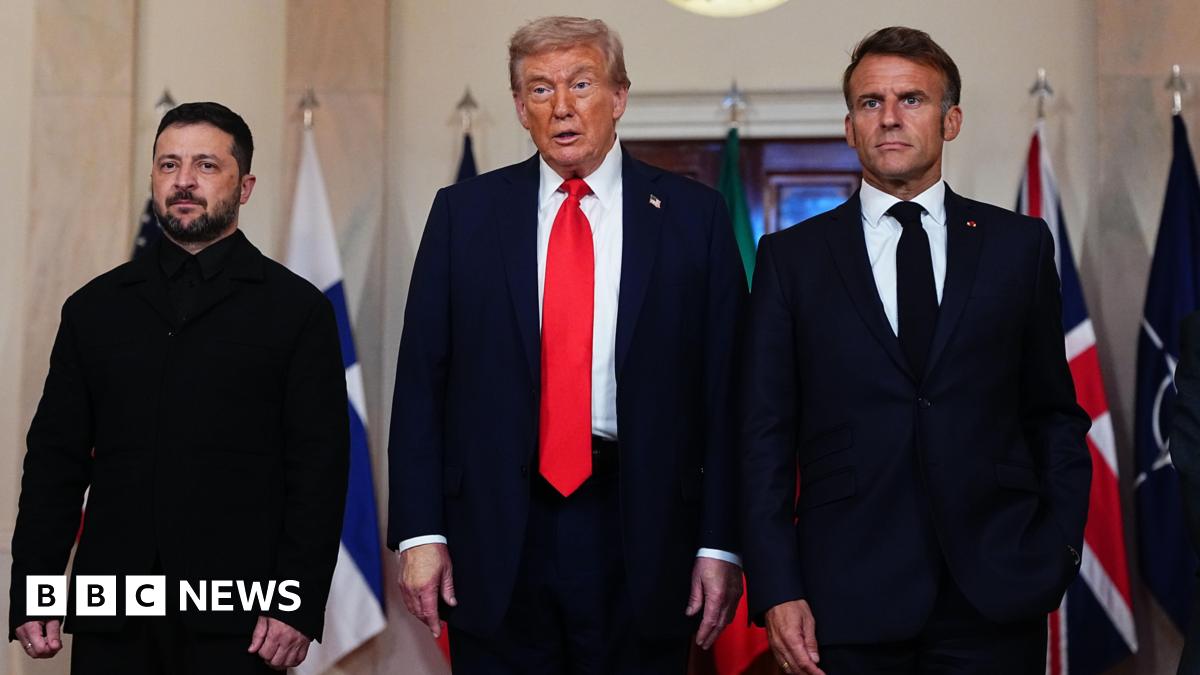
I WAS ALWAYS SKEPTICAL THAT ANYTHING positive could come out of a meeting between Donald Trump and Vladimir Putin. The setup was too familiar. It was a repeat of previous Trump administration negotiations with the Taliban, conducted without the Afghan government present, which set the stage for the collapse of Afghanistan, the victory of the Taliban, and the flight of President Ashraf Ghani (and much of his government) when he saw the writing on the wall. In any negotiation, when the aggressor is legitimized and the victim is sidelined, the result will be not peace but disaster.
The Alaska summit followed exactly that script. After a few days of messaging, but apparently without the disciplined preparation that usually precedes these kinds of critical meetings, Trump expected to conjure a breakthrough. Instead, he walked away with little more than Putin’s smirk and the state media in Moscow reporting their leader’s success. Ukraine was once again asked to hold its fire while its future was negotiated by others.
Sir Lawrence Freedman’s careful analysis of the summit captures both the disasters Trump avoided and those he invited. Trump did not swallow Putin’s most dangerous proposals—such as handing over Donetsk in return for a ceasefire. But the meeting ended with Trump abandoning even the pursuit of a ceasefire and adopting Putin’s line that only a “final settlement” of “underlying issues” could end the war. That shift, sudden and improvised, was a gift to Moscow.
The optics made it worse. I was embarrassed to see the U.S. military used as a prop in what looked more like a movie set than a serious summit. Rows of F-22s and F-35s lined the tarmac as if to impress, while a joint cadre of Army, Navy, and Air Force personnel rolled out and swept a red carpet for Putin’s arrival and then saluted as the primaries passed them by. A staged B-2 flyover then thundered overhead. If it was intended to intimidate Putin, he seemed to take it as a tribute, and it framed Trump and Putin as coequal world figures. The hearty handshakes, the exaggerated smiles, and the awkward hand-patting added to the gestures of a man who confuses theater with strength.
THE ATMOSPHERE COULDN’T HAVE BEEN more different after the discussions. Even Trump’s own staff seemed deflated. When they emerged from the meeting—which ended abruptly before lunch—the secretaries and aides wore the anxious look of people who had just seen their work, their goals, their plans incinerated in an instant.
Putin, by contrast, had every reason to smirk, and later to celebrate. Though an indicted war criminal, he received the red-carpet treatment reserved for a respected statesman and the chance to portray himself as a peacemaker while Russia’s missiles continued to destroy Ukrainian cities. Freedman also noted how swiftly Russian media ran with the images, declaring that Putin had been rescued from isolation and had secured a “boost to U.S.-Russian friendship.”
Trump, meanwhile, had little to offer but rambling complaints about the 2016 election and assurances to Sean Hannity that the meeting was a “ten out of ten.” Did anyone believe there would be any other message?
What emerged from Alaska was not a step toward peace but a unilateral retreat by the United States. For months, Trump has insisted that his goal is to secure a ceasefire (along with prompts for a Nobel Peace Prize if he did so). America’s allies, anxious but hopeful, reinforced that message. Volodymyr Zelensky declared that he was willing to come to the table, but also stated that any negotiation must begin with halting the violence. First ceasefire; then negotiate.
Ceasefires are imperfect, fragile, and often violated. But they matter. They create the breathing space necessary for negotiation. They slow the cycle of vengeance long enough for words to matter more than bombs. To skip that step is to allow Russia to negotiate while brutalizing Ukraine. It turns diplomacy into a shield for aggression.
Suddenly, after Alaska, Trump claimed that “mere ceasefires” were unreliable and that only a “final peace agreement” would do. In other words, in exchange for nothing, Putin got a propaganda victory and convinced Trump, at least for now, to adopt his preferred path to “negotiations.”
For Zelensky, this moment is as precarious as any he has faced. He is now in Washington meeting with Trump again. But this time, others are joining him, and they bring the credibility of all of Europe. In a striking show of unity, several European leaders—among them British Prime Minister Keir Starmer, French Emmanuel Macron, German Chancellor Olaf Scholz, Italian Prime Minster Giorgia Meloni, Finnish President Alexander Stubb, European Commission President Ursula von der Leyen, and NATO Secretary General Mark Rutte—have volunteered to be a group of Zelensky’s “seconds” in this duel with the American president. Their presence is more than symbolic. It is a deliberate effort to stand as a phalanx of facts against Russian propaganda and Trump’s improvisations.
Finland’s participation carries particular weight. As NATO’s newest member and a key member of the “Nordic-Baltic Eight,” with a vibrant democracy and an 800-mile land border with Russia, Finland knows the stakes of Russian aggression better than most. Finland joined NATO not out of opportunism but out of necessity, understanding that neutrality was no longer a shield but a vulnerability. Its seat at the table in Washington sends a clear message: Ukraine is not isolated, and Russia will not be allowed to redraw the map of Europe by force.
This is not an easy balancing act for Zelensky. He cannot be seen as yielding to pressure from Washington that undermines his nation’s sovereignty. But he must keep Trump engaged enough to maintain American support. He knows Trump responds to flattery, but he also knows that real strength will come from showing that Ukraine does not stand alone. The coalition traveling to Washington is designed to reinforce that this is not just Ukraine’s war; it’s Europe’s. And, ultimately, it should be America’s as well if we are to maintain our values and our leadership.
FREEDMAN OUTLINES WHY THE PATH Trump has embraced is not merely flawed but fantastical. Any real peace settlement would require years of painstaking negotiation over issues ranging from reparations and war crimes to the thorny question of security guarantees. Russia will instead demand “denazification” and “demilitarization”—in reality, Ukrainian subjugation—while Ukraine will insist on accountability for abductions, atrocities, and destruction. These are not the makings of a quick deal. They are the markers of a generational struggle.
Trump, however, will continue to treat diplomacy as he once treated real estate: transactional, theatrical, and superficial. When Zelensky explained that Ukraine’s constitution forbids him from trading away territory, Trump mocked him: “He’s got approval to go into war and kill everybody, but he needs approval to do a land swap?” That quip ignores the fundamental truth: Zelensky didn’t start this war. Ukraine didn’t choose to be invaded. You don’t need approval to defend yourself, to protect your people, or to resist being erased from the map. What requires approval—and legitimacy—is trading away your country’s land to appease an invader. And that kind of lunacy requires your government and your people to approve. So far, that isn’t likely to happen.
Ukraine’s war has always been about more than geography—not just since the full-scale invasion in 2022 but since the annexation of Crimea in 2014. It’s about whether free nations can defend their sovereignty against a bully intent on erasing them, and whether the United States will support them. If Putin succeeds in dictating borders by force, and the American president goes along with it, the precedent will reverberate around the world. The lesson to autocrats will be clear: Aggression works, and the West will fold.
The Alaska summit confirmed what many of us feared: Trump is susceptible to Putin’s framing, eager for shortcuts, and inattentive to the hard realities of what a nation will continue to fight to defend. Trump’s meetings with Zelensky and the Europeans risk becoming more empty, self-defeating spectacles unless Zelensky and his European partners can anchor the discussion in principles that matter. Sovereignty should not be negotiated away. Freedom should not be bartered.
If the United States abandons the discipline of diplomacy—if it pursues fantasy peace instead of principled ceasefire and negotiation—the consequences will last for generations. Peace without justice is not peace. It is surrender. And Ukraine, like Afghanistan before it, deserves better than to be written off in someone else’s script.
Source link
